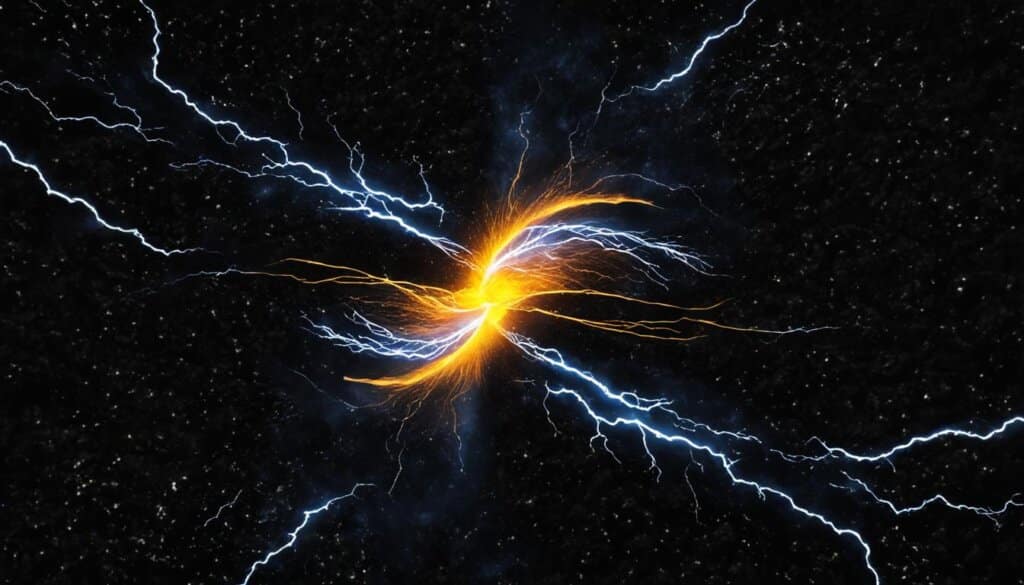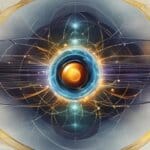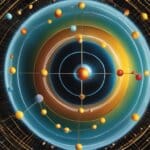Table of Contents
Current plays a fundamental role in the field of electricity and is essential for powering our modern world. But what exactly is current? In simple terms, current refers to the flow of electrical charge carriers, such as electrons or electron-deficient atoms, through a conductor. It is represented by the symbol ‘I’ and measured in amperes (A).
Current can exist in two forms: direct current (DC) and alternating current (AC). Direct current flows in the same direction at all points in time, while alternating current periodically changes its direction. Both DC and AC currents have their own distinct properties and applications in various electrical systems.
The density of current, known as current density, refers to the amount of current flowing through a particular area of a conductor. This density can vary in different parts of the conductor, depending on factors such as the conductor’s size and the presence of any resistive elements. The flow of current always generates a magnetic field, which further influences the behavior of current-carrying conductors.
Current is closely related to voltage and resistance through Ohm’s Law. According to Ohm’s Law, the current flowing through a conductor is directly proportional to the voltage across it and inversely proportional to the resistance encountered. This mathematical relationship helps us understand and analyze the behavior of electrical circuits.
By gaining a deeper understanding of current and its fundamental principles, we can better comprehend the workings of electrical systems and harness their potential for various applications in our modern society.
The Basics of Current: Voltage, Current, and Resistance
Understanding the fundamentals of electricity requires knowledge of three key concepts: voltage, current, and resistance. These foundational elements form the basis of electrical systems and circuits, allowing the flow of electrical charge and the harnessing of electrical energy.
Voltage refers to the difference in charge between two points in a circuit. It is measured in volts (V) and represents the potential energy that drives the flow of electric current. Voltage can be compared to the pressure in a water pipe, providing the force that pushes electrons through a conductor.
Current represents the rate at which electric charge flows through a conductor. It is measured in amperes (A) and is denoted by the symbol ‘I’. Current can be thought of as the flow of electrons or other charge carriers along a path. Just like the flow of water in a pipe, current is essential for the operation of electrical devices and the transfer of energy.
Resistance is the property of a material that impedes the flow of electric current. It is measured in ohms (Ω). Resistance can be visualized as a narrowing or constriction in the pipe, creating a hindrance to the water flow. Similarly, in an electrical circuit, resistance restricts the flow of electrons, converting some of the electrical energy into heat.
Georg Ohm, a German physicist, formulated Ohm’s Law, which provides a mathematical relationship between voltage, current, and resistance. According to Ohm’s Law, the current flowing through a conductor is directly proportional to the voltage across it and inversely proportional to the resistance. This relationship is represented by the equation: I = V/R.
A circuit is a closed loop that allows the flow of electrical charge. It consists of various components such as resistors, capacitors, and inductors, which can control and manipulate the flow of current. Understanding the basics of voltage, current, and resistance lays the foundation for comprehending more complex electrical concepts and circuits.
Benefits of Understanding Voltage, Current, and Resistance
Having a grasp of voltage, current, and resistance enables individuals to design circuits, troubleshoot electrical problems, and make informed decisions regarding the choice of electrical components.
The relationship between voltage, current, and resistance is central to every electrical system, from small electronic devices to large power distribution networks. By understanding these principles, individuals can:
- Design and construct circuits that meet specific requirements.
- Calculate and predict the behavior of electrical systems.
- Identify and resolve issues in malfunctioning circuits.
- Select appropriate components based on the desired current and voltage ratings.
- Ensure the safe and efficient operation of electrical devices and equipment.
In summary, voltage, current, and resistance form the fundamental building blocks of electricity. They are indispensable concepts for anyone working with or studying electrical systems. By grasping these basics and applying Ohm’s Law, individuals gain the knowledge needed to navigate the world of electricity and harness its potential.
| Concept | Definition | Unit of Measurement |
|---|---|---|
| Voltage | The difference in charge between two points in a circuit | Volts (V) |
| Current | The rate of flow of electric charge | Amperes (A) |
| Resistance | A material’s tendency to resist the flow of current | Ohms (Ω) |
Direct Current (DC) vs Alternating Current (AC)
When it comes to electricity, there are two main types of current: direct current (DC) and alternating current (AC). The key difference between them lies in the direction of the flow of electrical charge. DC flows in one direction at all points in time, while AC periodically reverses its flow direction.
Direct current, commonly referred to as DC, is typically produced by batteries or electrochemical cells. It is commonly used in portable devices such as smartphones and laptops since it provides a steady, constant flow of electricity.
On the other hand, alternating current, or AC, is the type of current supplied by utility outlets. AC current periodically changes its flow direction, typically at a frequency of 50 or 60 cycles per second, known as the frequency. This rapid change in direction allows for the efficient transmission of electricity over long distances and is ideal for powering homes, businesses, and industries.
To better understand the difference between DC and AC, let’s take a look at a concise table:
| Direct Current (DC) | Alternating Current (AC) |
|---|---|
| Flows in one direction at all times | Periodically reverses flow direction |
| Produced by batteries or electrochemical cells | Supplied by utility outlets |
| Used in portable devices | Used for powering homes, businesses, and industries |
| – | Has a frequency measured in hertz (Hz) |
| Efficient for long-distance transmission |

Understanding the difference between DC and AC is crucial in various applications and industries. While DC offers a constant flow of electricity ideal for portable devices, AC is the preferred choice for efficient power transmission over long distances. Each has its own advantages and uses, making them essential components in the world of electricity and power.
Current Density and Its Applications
In the study of electrical conductors, current density plays a significant role. It refers to the amount of current flowing through a specific cross-sectional area of a conductor. By understanding current density, engineers and researchers can optimize the performance and efficiency of various electrical systems.
Current density is typically expressed in units such as amperes per square meter (A/m²), amperes per square centimeter (A/cm²), amperes per square millimeter (A/mm²), or amperes per circular mil (A/cmil).
The relationship between current and current density is straightforward. The greater the current flowing through a conductor, the higher the current density will be. This principle can be observed in everyday electrical systems, where high-current applications require conductors with larger cross-sectional areas to handle the increased current density and prevent overheating.
However, it’s essential to note that current density is not uniform throughout a conductor in some cases. This phenomenon is known as the skin effect. In the skin effect, the current density is higher near the outer surface of the conductor and gradually decreases towards the center. This non-uniform distribution of current density is influenced by the electromagnetic fields generated within the conductor.
Current density also plays a crucial role in the generation of electromagnetic fields. When an electric current flows through a conductor, it creates an associated magnetic field around it. The strength and shape of this magnetic field are determined by the current density and the specific properties of the conductor. Understanding current density is therefore essential in designing and evaluating electromagnetic devices such as motors, transformers, and solenoids.
Applications of Current Density
Current density has various practical applications across numerous industries. Some notable applications include:
- Electrical Power Transmission: In high-voltage power transmission lines, current density is carefully managed to ensure efficient energy transfer and minimize power losses.
- Conductor Sizing: Proper conductor sizing in electrical systems is based on current density calculations to ensure safe and reliable operation.
- Electroplating: Current density is critical in electroplating processes, where controlled deposition of metal ions onto a substrate is achieved by managing the current density.
- Electromagnetic Compatibility: Current density analysis helps in assessing the electromagnetic compatibility of devices and systems, ensuring they operate without interference or detrimental effects.
The Relationship Between Current and Magnetic Fields
A current always produces a magnetic field, and the strength of the magnetic field is directly proportional to the current. When an electric current flows through a conductor, it generates a circular magnetic field around the conductor. The magnetic field lines form closed loops that are perpendicular to the direction of the current.
To illustrate this concept, consider a simple experiment. If you pass a current through a straight wire and place a compass nearby, the needle of the compass will align with the magnetic field produced by the current. The magnetic field lines form concentric circles around the wire, with the strongest field closest to the wire.
A more practical application of the relationship between current and magnetic fields is seen in the generation of electromagnetic fields. When an AC (alternating current) or a pulsating DC (direct current) flows through a conductor, it produces an electromagnetic field. This electromagnetic field is a combination of an electric field and a magnetic field, which propagate through space.
Example: Magnetic field produced by a current in a wire
Let’s take a closer look at the magnetic field produced by a current in a wire. Suppose the current in the wire is 2 Amperes. The magnetic field intensity at various distances from the wire can be calculated using the Biot-Savart Law. Here’s a table showcasing the magnetic intensity at different distances:
| Distance from Wire (in meters) | Magnetic Field Intensity (in Tesla) |
|---|---|
| 0.1 | 5.00 x 10^-5 |
| 0.2 | 2.50 x 10^-5 |
| 0.3 | 1.11 x 10^-5 |
As you can see from the table, the magnetic field intensity decreases as the distance from the wire increases, following the inverse square law. This demonstrates the direct relationship between the current in a wire and the magnetic field intensity it produces.
“The interaction between current and magnetic fields is fundamental in various applications, including wireless signal propagation.”
The relationship between current and magnetic fields has numerous practical applications. Understanding this relationship is crucial for various technological advancements, such as wireless signal propagation and electromagnetic induction. By harnessing the power of current and magnetic fields, scientists and engineers have been able to revolutionize industries ranging from telecommunications to power generation.
The Measurement and Units of Current
In the world of electrical engineering, current is an essential parameter that plays a significant role in understanding and designing circuits. In this section, we will explore the measurement and units of current, along with the symbols and tools used for accurate current scaling and measurement.
Current is measured in amperes (A), which represents the quantity of electrons flowing past a point in a circuit over time. The symbol “A” is used to denote amperes. However, for convenience, smaller units of current measurement are also used, namely milliamperes (mA) and microamperes (µA). Milliamperes are one-thousandth of an ampere, while microamperes are one-millionth of an ampere.
To put it into perspective:
- 1 ampere (A) = 1,000 milliamperes (mA)
- 1 ampere (A) = 1,000,000 microamperes (µA)
When it comes to measuring current, digital multimeters are commonly used. These versatile instruments can measure various electrical parameters, including current. However, most digital multimeters have a limit on the current they can measure, typically up to 10 amps. Beyond this limit, specialized equipment such as current clamps are employed.
A current clamp is a tool that gauges the magnetic field around a conductor to measure the current flowing through it. By detecting the magnetic field, the current clamp provides an indirect measurement of the current. This allows for accurate measurement even in high-current applications that exceed the range of a standard multimeter.
The size of conductors, fuses, and components also plays a crucial role in determining the amount of current flowing through a circuit. These elements are designed to handle specific current levels without exceeding their capacity, ensuring safe and efficient operation.
Units of Current Measurement
| Unit | Symbol | Equivalent |
|---|---|---|
| Ampere | A | N/A |
| Milliampere | mA | 1 ampere (A) = 1,000 milliamperes (mA) |
| Microampere | µA | 1 ampere (A) = 1,000,000 microamperes (µA) |
Applications and Importance of Current
Current plays a crucial role in various applications, enabling the efficient conversion of electrical energy into different forms. These applications extend to devices that produce light, motion, heat, and many other forms of energy. Understanding the importance of current is essential in optimizing circuit performance and ensuring the safe operation of electrical systems.
Circuit Loading: When additional loads are connected to a circuit, the current requirement increases. Properly managing circuit loading ensures that each component receives the necessary current to function optimally, avoiding overloading or underloading.
Energy Conversion: Current is the driving force behind the conversion of electrical energy into other useful forms. For example, in an incandescent light bulb, current passes through a filament, producing heat and light energy. In an electric motor, current generates the magnetic field that causes the rotor to spin, resulting in mechanical motion.
Measurement and Troubleshooting: Monitoring and measuring current is critical for assessing circuit performance and troubleshooting electrical issues. By measuring current, technicians can identify circuit loading problems, locate faults, and ensure that components are operating within safe current limits.
Voltage Sources: Different voltage sources produce varying amounts of current. For example, batteries can provide low-current DC while power generators supply higher-current AC. Understanding the characteristics of different voltage sources is essential for selecting the appropriate power source for a given application.
Loads and Component Design: Conductors, fuses, and components are specifically designed to handle specific current levels. Properly selecting and designing these elements ensures that they can handle the expected current without exceeding their limits, thereby promoting safe and reliable operation.
To better illustrate the applications and importance of current, consider the following table:
| Application | Description |
|---|---|
| Light Bulb | Converts electrical energy into light and heat through the flow of current. |
| Electric Motor | Utilizes current to generate a magnetic field, resulting in mechanical motion. |
| Power Grid | Delivers AC current to homes and businesses for various electrical appliances. |
| Electroplating | Current is used to coat a conductive surface with a metal layer. |
| Circuit Overload | Excessive current can overload circuits, leading to potential hazards and component failure. |
As seen in the table, current enables a wide range of practical applications and highlights its significant role in various fields. Understanding current and its implications empowers engineers, electricians, and technicians to effectively design, analyze, and troubleshoot electrical systems.
Ohm’s Law and Current Calculation
Ohm’s Law is a fundamental principle in understanding the relationship between voltage, current, and resistance in an electrical circuit. It can be summarized by the formula I = V/R, where I represents current, V represents voltage, and R represents resistance.
By using Ohm’s Law, we can calculate the amount of current flowing through a circuit given the values of voltage and resistance. This calculation enables us to accurately determine the behavior of the circuit and ensure the proper functioning of its components.
To illustrate the practical application of Ohm’s Law, let’s consider an example experiment involving an LED and a resistor. By applying the formula I = V/R, we can precisely control the current flowing through the LED by selecting an appropriate resistor value. This not only protects the LED from excessive current but also helps maintain its optimal performance.
Understanding Ohm’s Law and its implications in current calculations is crucial for anyone working with electrical circuits. It allows us to determine the relationship between voltage, current, and resistance and empowers us to design and troubleshoot circuits effectively.
FAQ
What is current?
Current is the flow of electrical charge carriers, such as electrons or electron-deficient atoms. It is represented by the symbol ‘I’ and measured in amperes (A).
What are the two types of current?
Current can be either direct current (DC) or alternating current (AC). DC flows in the same direction at all points in time, while AC reverses direction periodically.
What is current density?
Current density refers to the current per unit cross-sectional area and can vary in different parts of an electrical conductor.
Does current always produce a magnetic field?
Yes, the flow of current always produces a magnetic field.
According to Ohm’s Law, current is equal to the voltage divided by the resistance.
What are the basic building blocks of electricity?
The basic building blocks of electricity are voltage, current, and resistance.
What is the difference between direct current and alternating current?
Direct current (DC) flows in one direction at all points in time, while alternating current (AC) periodically reverses its flow direction.
How does current density vary within a conductor?
Current density can vary within a conductor, such as in the skin effect where it is higher near the outer surface.
What is the relationship between current and magnetic fields?
A current always produces a magnetic field, and the strength of the magnetic field is directly proportional to the current.
What units are used to measure current?
The ampere (A) is the unit used for measuring current, representing the quantity of electrons flowing past a point in a circuit over time.
Why is current measurement important?
Measuring current is crucial for determining circuit loading and troubleshooting electrical problems.
Ohm’s Law states that current is equal to the voltage divided by the resistance (I = V/R).













